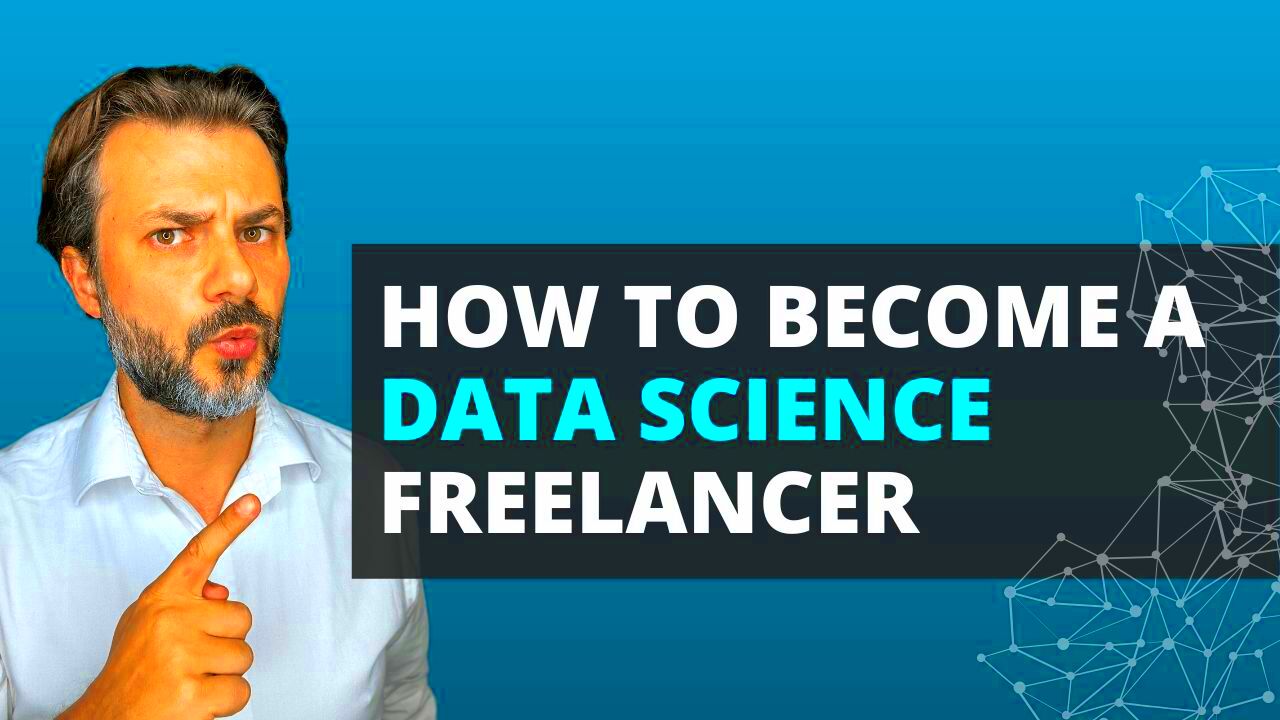Freelancing as a data scientist is an exciting and growing opportunity. With more businesses relying on data for decision-making, the demand for skilled data scientists continues to rise. As a freelance data scientist, you have the flexibility to work with various clients and on different types of projects. Whether it’s analyzing big data, building machine learning models, or helping businesses make data-driven decisions, freelancing offers the freedom to shape your career path. However, it also comes with its own set of challenges, like finding clients and managing your own time and projects.
Key Skills Needed for Freelance Data Science

To succeed as a freelance data scientist, certain technical and soft skills are essential. Here's a breakdown of the key skills you need:
- Programming Languages: Proficiency in Python, R, and SQL is crucial for analyzing data and building models.
- Data Analysis & Visualization: Skills in data cleaning, analysis, and visualization tools like Excel, Tableau, or Power BI are necessary for presenting insights to clients.
- Machine Learning & Algorithms: Understanding machine learning algorithms such as regression, classification, and clustering will help you tackle more complex data tasks.
- Statistical Knowledge: A strong understanding of statistics is essential to interpret data accurately and make informed decisions.
- Communication Skills: Being able to explain complex data findings to clients in a simple and actionable way is key to successful freelancing.
- Project Management: Freelance work requires you to manage multiple clients, deadlines, and tasks simultaneously, making organizational skills vital.
By honing these skills, you'll not only stand out as a data scientist but also improve your ability to secure and deliver on freelance projects.
Also Read This: Top 10 Math Tutors on Fiverr in 2024
How to Build a Strong Portfolio as a Freelance Data Scientist

Your portfolio is your best marketing tool as a freelance data scientist. It showcases your skills and expertise to potential clients. Here’s how you can build a strong portfolio:
- Start with Personal Projects: If you’re new to freelancing, create projects on your own to demonstrate your abilities. These can include data analysis, machine learning models, or visualizations. Use publicly available datasets from sources like Kaggle or UCI Machine Learning Repository.
- Include Real-World Projects: As you gain experience, include projects from actual clients (with permission) or your freelance gigs. Make sure to highlight the challenges, the solutions you implemented, and the impact your work had on the client’s business.
- Showcase Your Process: Instead of just listing your deliverables, walk potential clients through your problem-solving approach. Share your process, from gathering data to cleaning and analyzing it to building models and presenting results.
- Use Online Platforms: Platforms like GitHub or LinkedIn allow you to share your code, visualizations, and case studies. This helps establish credibility and makes your portfolio accessible to a larger audience.
- Keep It Updated: Regularly update your portfolio with new projects, skills, and accomplishments. An outdated portfolio might give the wrong impression to potential clients.
A well-maintained portfolio will increase your chances of landing high-quality freelance gigs and help you build a strong reputation in the data science community.
Also Read This: How to Break into the Industry as a Freelance Fashion Designer
Finding Clients as a Freelance Data Scientist
Finding clients as a freelance data scientist can be one of the trickiest parts of starting out. However, with the right approach, you can attract quality clients who value your expertise. Here’s how to get started:
- Use Freelance Platforms: Websites like Fiverr, Upwork, and Toptal are great places to find clients looking for freelance data scientists. These platforms allow you to create a profile, showcase your skills, and apply for projects.
- Networking: Attend industry events, webinars, and meetups (both online and offline). Building relationships with other data scientists and professionals can lead to referrals and job opportunities.
- Leverage LinkedIn: Make sure your LinkedIn profile is up-to-date and includes your key skills, projects, and recommendations. Engage in discussions, share your insights, and connect with potential clients.
- Word of Mouth: Happy clients will often refer you to others. Don’t hesitate to ask satisfied clients for recommendations or testimonials that you can use to build your credibility.
- Content Marketing: Writing blogs, creating tutorials, or sharing case studies on data science can help you establish yourself as an expert in your field. These content pieces also act as a portfolio for prospective clients.
By focusing on these strategies, you’ll increase your chances of finding reliable clients who need your services. Remember, patience is key as it may take time to build a steady stream of work.
Also Read This: How to Block People on Fiverr
Setting Your Rates and Managing Payments
As a freelance data scientist, setting your rates and managing payments are crucial steps in maintaining a sustainable business. Here's a guide on how to get it right:
- Research Industry Standards: Before setting your rates, research the going rates for freelance data scientists in your region or on global platforms. Rates can vary based on experience, expertise, and the type of project. For example, entry-level data scientists might charge between $20 to $50 per hour, while more experienced professionals might charge upwards of $100 per hour.
- Consider Project Complexity: Not all data science projects are equal. You should charge higher rates for more complex tasks that require advanced skills, such as building custom machine learning models or working with large datasets.
- Fixed-Rate vs Hourly: Decide whether you want to charge by the hour or a fixed price for each project. Hourly rates are useful for ongoing or undefined projects, while fixed rates are ideal for clearly defined projects where you know the scope.
- Use Contracts: Always have a written agreement in place that outlines the payment terms, deliverables, and timeline. This protects both you and the client and helps avoid any misunderstandings.
- Payment Methods: Choose payment methods that are secure and convenient. Platforms like PayPal, TransferWise, or bank transfers are common for international payments. Make sure to agree on the payment schedule, whether it's upfront, after milestones, or upon completion of the project.
By setting clear rates and payment terms, you ensure that you get paid what you’re worth while keeping financial disputes to a minimum.
Also Read This: The 5 Most Popular Categories on Fiverr: A Comprehensive Guide
Challenges Faced by Freelance Data Scientists
While freelancing as a data scientist offers flexibility, it also presents unique challenges. Understanding these challenges will help you prepare for and overcome them. Here are some of the most common hurdles:
- Client Acquisition: One of the biggest challenges is constantly finding new clients. Building a network and maintaining relationships with clients can take time and effort. You may also face competition from other freelancers with similar skills.
- Unpredictable Income: Unlike traditional jobs, freelance work doesn’t guarantee a steady paycheck. Some months may be packed with projects, while others could be slow. Learning how to manage finances and save for leaner months is important.
- Project Scope Creep: Clients may ask for more work than originally agreed upon, without adjusting the payment or deadline. It's essential to set clear expectations and have a contract in place to prevent this.
- Time Management: As a freelancer, you are responsible for managing your time, including working with multiple clients, meeting deadlines, and balancing your personal life. Efficient time management tools and techniques can help with this.
- Technical Skill Maintenance: Data science is an ever-evolving field. Keeping up with the latest tools, techniques, and trends can be overwhelming. Dedicate time regularly to learn and improve your skills to stay competitive.
While these challenges can seem daunting, developing the right strategies and mindset can help you overcome them and succeed as a freelance data scientist. Flexibility, adaptability, and continuous learning are key to a long-term career in freelancing.
Also Read This: How to Use Fiverr to Make Money in Hindi
Staying Updated with the Latest Trends in Data Science
Data science is a fast-paced field, and staying updated with the latest trends, tools, and techniques is crucial to maintaining a competitive edge. New technologies and methods emerge frequently, and keeping up can seem overwhelming. Here’s how you can stay on top of the latest trends:
- Follow Industry Leaders: Engage with thought leaders and experts in data science on platforms like Twitter, LinkedIn, or Medium. These professionals often share the latest research, tools, and trends that can help you stay informed.
- Read Research Papers: Platforms like arXiv.org and Google Scholar offer access to cutting-edge research papers. Reading these papers can provide deeper insights into new algorithms, data processing techniques, and industry innovations.
- Take Online Courses and Certifications: Platforms like Coursera, edX, and Udacity offer courses on the latest developments in data science. From deep learning to reinforcement learning, these courses keep you sharp and well-versed in emerging technologies.
- Attend Conferences and Meetups: Data science conferences like Strata Data Conference, KDD, and PyData bring together professionals to discuss the latest advancements. Attending these events, either virtually or in person, gives you a firsthand look at the future of data science.
- Experiment with New Tools: Don’t be afraid to try out new tools or libraries. Platforms like Kaggle are great for applying new techniques and exploring real-world datasets. Regularly testing new software or algorithms can help you stay ahead of the curve.
By adopting a continuous learning approach, you can ensure your skills remain relevant and competitive in the fast-moving world of data science.
Also Read This: How Can Strategic Backlinks Improve Your Fiverr Gig Rankings in 2025?
FAQ
Here are some frequently asked questions about becoming a freelance data scientist:
- How do I start my career as a freelance data scientist? Begin by learning essential data science skills like Python, R, and SQL. Build a portfolio with personal and real-world projects, and start applying for gigs on freelance platforms like Fiverr and Upwork.
- What’s the best way to find clients? Networking, utilizing freelance platforms, and having an updated LinkedIn profile are some of the best ways to find clients. Additionally, showcasing your work through blogs or personal projects can help attract potential clients.
- How much should I charge for my services? Your rates will depend on your experience and the complexity of the project. Entry-level rates range from $20–$50 per hour, while more experienced professionals can charge $100 or more. Research the market to set competitive but fair rates.
- What if I don’t have a lot of experience? You can still start by working on personal projects, collaborating on open-source initiatives, or offering your services at a lower rate to build your portfolio and gain real-world experience.
- How do I handle clients who want more work than originally agreed? To avoid scope creep, ensure that you have a clear contract in place with defined deliverables. If additional work is requested, you can discuss an appropriate adjustment to the payment and timeline.
Conclusion
Becoming a successful freelance data scientist requires a blend of technical expertise, strong communication skills, and business acumen. By continuously developing your skills, building a solid portfolio, and networking with potential clients, you can carve out a rewarding freelance career. While there are challenges, the flexibility, diverse work, and the opportunity to work on impactful projects make freelancing in data science an exciting career choice. Remember, the key to long-term success is continuous learning, adaptability, and strategic client management. Embrace these principles, and you'll be well on your way to thriving as a freelance data scientist.




